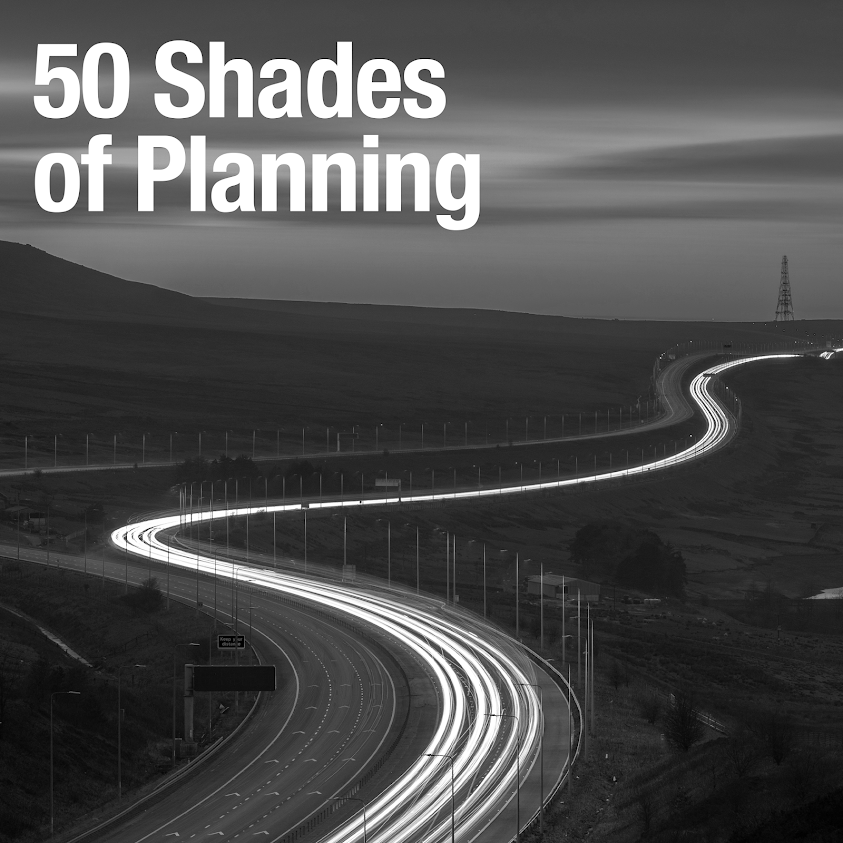If you were to believe the Telegraph this week, 'thousands of new homes are set to be built on the Green Belt in the biggest relaxation to planning protections for 30 years'.
If you were to believe the Telegraph of course...
However, the proposed amendments to the NPPF have certainly brought the Green Belt back to the media's attention, which is why some perspective is required.
This is not the biggest relaxation of planning protections for 30 years. Given the frequency with which the Government likes to tinker with the planning system it's probably not the biggest relaxation of planning protections for 30 days.
In relation to brownfield land, the NPPF, if amended to reflect the current consultation, will support the regeneration of previously developed brownfield sites in the Green Belt by allowing them to be developed in the same way as other brownfield land, providing this contributes to the delivery of starter homes, and subject to local consultation.
The current policy test in paragraph 89 of the NPPF prevents development of brownfield land in the Green Belt where there is any additional impact on the openness of the Green Belt. This, very loosely, might mean that if a former factory, for example, had 50,000m2 of buildings then it might be possible to argue that 50,000m2 of new homes would have no additional impact on the Green Belt. The proposed policy test would be that redevelopment may not be considered inappropriate development where any harm to openness is "not substantial", which might provide a basis for more than 50,000m2 of new homes in the example above. Given though that, as the consultation document itself states, only 0.1% of land in the Green Belt is previously developed brownfield land, this is hardly a fundamental change.
In relation to greenfield land, the NPPF, if amended to reflect the current consultation, will support the allocation in neighbourhood plans of starter homes on 'small-scale' sites in the Green Belt.
In relation to brownfield land, the NPPF, if amended to reflect the current consultation, will support the regeneration of previously developed brownfield sites in the Green Belt by allowing them to be developed in the same way as other brownfield land, providing this contributes to the delivery of starter homes, and subject to local consultation.
The current policy test in paragraph 89 of the NPPF prevents development of brownfield land in the Green Belt where there is any additional impact on the openness of the Green Belt. This, very loosely, might mean that if a former factory, for example, had 50,000m2 of buildings then it might be possible to argue that 50,000m2 of new homes would have no additional impact on the Green Belt. The proposed policy test would be that redevelopment may not be considered inappropriate development where any harm to openness is "not substantial", which might provide a basis for more than 50,000m2 of new homes in the example above. Given though that, as the consultation document itself states, only 0.1% of land in the Green Belt is previously developed brownfield land, this is hardly a fundamental change.
In relation to greenfield land, the NPPF, if amended to reflect the current consultation, will support the allocation in neighbourhood plans of starter homes on 'small-scale' sites in the Green Belt.
So, first of all sites are 'small-scale', and second all the development of it would need to be supported by a neighbourhood plan. Though the Government span this year that neighbourhood plans were boosting the supply of housing by 10% (presumably on the basis that something in a few neighbourhood plans is better than nothing in many absent local plans), research from Turley last year found that more neighbourhood plans than not sought primarily to resist development. Moreover, the majority of neighbourhood plans at that time were coming forward in Conservative-controlled authorities, in rural areas, in the south. In other words, prime Green Belt territory.
The significance of this proposed policy reform is not, therefore, in it's likely outcome, which even if it did result in thousands of new homes will not make a major contribution to the additional tens of thousands required to take output over the 200,000 barrier. The paragraph 89 amendment is consistent with an attitudinal shift towards brownfield sites in the Green Belt that has gone from 'major development sites only' in the old PPG2, to 'neutral impact' in the 2012 NPPF, to 'please just build on brownfield sites' in the next NPPF (some paraphrasing there...). Giving a Parish Council the ability to allocate Green Belt land for housing is a bit like giving Jeremy Corbyn the nuclear button. It is potentially powerful, but the chances are that it will not be used.
No, the significance of this policy reform is more likely to be the fact that the need for housing on greenfield sites, albeit small scale and locally-led, will be held to be of greater importance than a Green Belt designation. Maybe, just maybe, it is a step towards the Government accepting that the absence of a five year housing supply, or the need to accommodate full, objectively assessed housing needs, is of greater importance than a Green Belt designation. Such a move might legitimately be said to represent the biggest relaxation to planning protections for 30 years, but the current consultation really is not.
No, the significance of this policy reform is more likely to be the fact that the need for housing on greenfield sites, albeit small scale and locally-led, will be held to be of greater importance than a Green Belt designation. Maybe, just maybe, it is a step towards the Government accepting that the absence of a five year housing supply, or the need to accommodate full, objectively assessed housing needs, is of greater importance than a Green Belt designation. Such a move might legitimately be said to represent the biggest relaxation to planning protections for 30 years, but the current consultation really is not.

Comments
Post a Comment